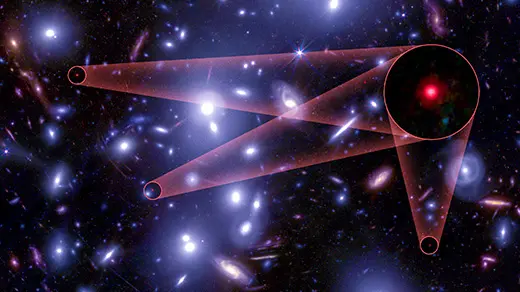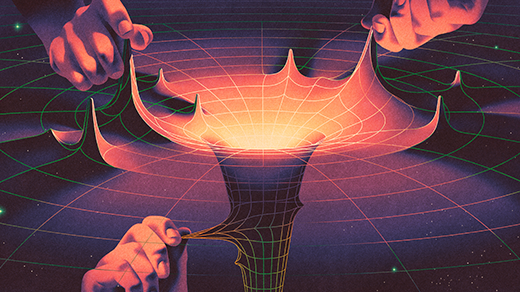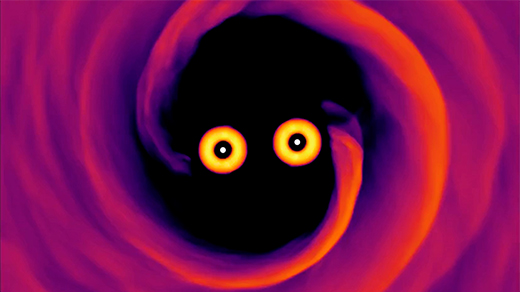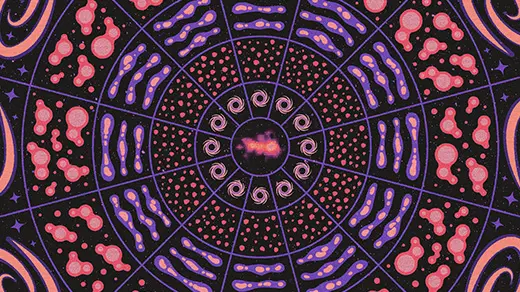What's up in
Black holes
Latest Articles
A Single, ‘Naked’ Black Hole Rewrites the History of the Universe
The James Webb Space Telescope has found a lonely black hole in the early universe that’s as heavy as 50 million suns. A major discovery, the object confounds theories of the young cosmos.
A New Geometry for Einstein’s Theory of Relativity
A team of mathematicians based in Vienna is developing tools to extend the scope of general relativity.
New Maps of the Bizarre, Chaotic Space-Time Inside Black Holes
Physicists hope that understanding the churning region near singularities might help them reconcile gravity and quantum mechanics.
How Do Merging Supermassive Black Holes Pass the Final Parsec?
The giant holes in galaxies’ centers shouldn’t be able to merge, yet merge they do. Scientists suggest that an unusual form of dark matter may be the solution.
The ‘Beautiful Confusion’ of the First Billion Years Comes Into View
Astronomers are reveling in the James Webb Space Telescope’s discoveries about the formative epoch of cosmic history.
The #1 Clue to Quantum Gravity Sits on the Surfaces of Black Holes
A black hole formula worked out in the 1970s remains the most concrete clue physicists have about the threads of the space-time fabric.
The Thought Experiments That Fray the Fabric of Space-Time
These three imagined scenarios lead many physicists to doubt that space-time is fundamental.
The Unraveling of Space-Time
This special issue of Quanta Magazine explores the ultimate scientific quest: the search for the fundamental nature of reality.
Mathematicians Prove Hawking Wrong About the Most Extreme Black Holes
For decades, extremal black holes were considered mathematically impossible. A new proof reveals otherwise.








